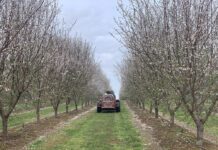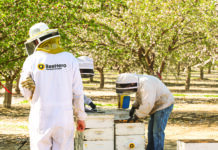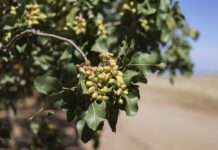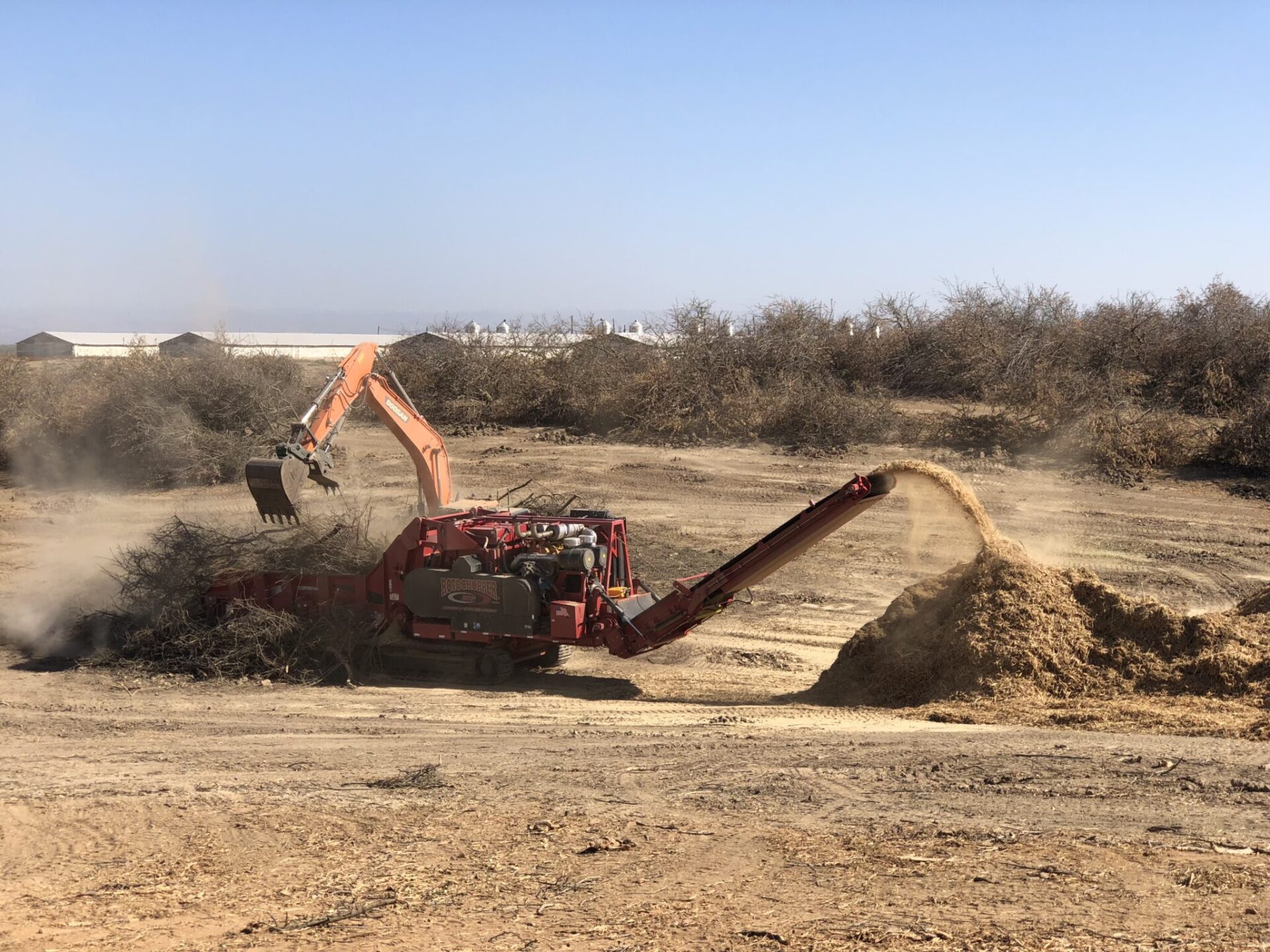
Scientists are finding that applying five ounces of nitrogen per almond tree for the first year after whole orchard recycling (WOR), or two ounces over commonly recommended rates for young trees, is sufficient to overcome the high carbon-to-nitrogen (C:N) ratio that the practice creates in soil.
Further, during West Coast Nut’s virtual Almond Day 2021 presentation on June 15, Mae Culumber, nut crops farm advisor for Fresno County, said researchers are recommending that growers spoon-feed the nitrogen in doses of no more than an ounce at a time and, when possible, sprinkle granular nitrogen around trees.
The findings show that growers can resume typical nitrogen application rates in year two, Culumber said.
Culumber, UCCE Pomology Farm Advisor for San Joaquin County Brent Holtz and other researchers have been refining nitrogen application rate recommendations after WOR for several years, essentially since growers started noticing stunting in some almond orchards after WOR. Experiments have involved adding up to three times the recommended rate for early tree growth, and then scaling that down.
“We ended up applying 100 pounds per acre, or nearly 10 ounces per tree,” Holtz said of one experiment. “That is where we started working backward and found that we can get away with five ounces per tree to get the growth we want.”
In recent experiments, including in a trial established at the Kearney Agricultural Research and Extension Center in 2019, researchers are actually seeing better first-year growth in WOR trees than in trees planted under conventional conditions, according to Culumber.
“We have other trial sites throughout the state where, similarly, we are finding the same or better growth in whole orchard recycled trees when we’ve applied that triple-15 granularly application early on,” Culumber said.
Despite high costs and some preliminary issues with stunted trees, WOR has emerged as a viable alternative to tree removal when replanting almond orchards. Holtz noted that about 400 growers have recycled about 40,000 acres under the practice to date.
In her Almond Day presentation, Culumber addressed the most common questions she gets about WOR: Will the practice benefit soil? The answer, she said, is yes.
“We are seeing increased infiltration, increased water-holding capacity and increased microbial activity in soils from recycled orchards,” she said.
Adding organic matter, such as wood chips, to soil improves the physical and biological properties in soil that influence water retention and the permeability of water through soil, which helps with drainage, aeration and soil structure. Further, adding organic matter provides a source of energy for microorganisms to begin decomposition and produces substrates that act as a sort of glue for soil particles, giving soil the kind of structure and porosity that scientists associate with a better environment for tree roots.
“In some research that I’ve done and in trials where we compared different organic amendments, we saw much higher levels of microbial activity in plots where we amended with wood chips compared to control or just fumigated soil,” she said.
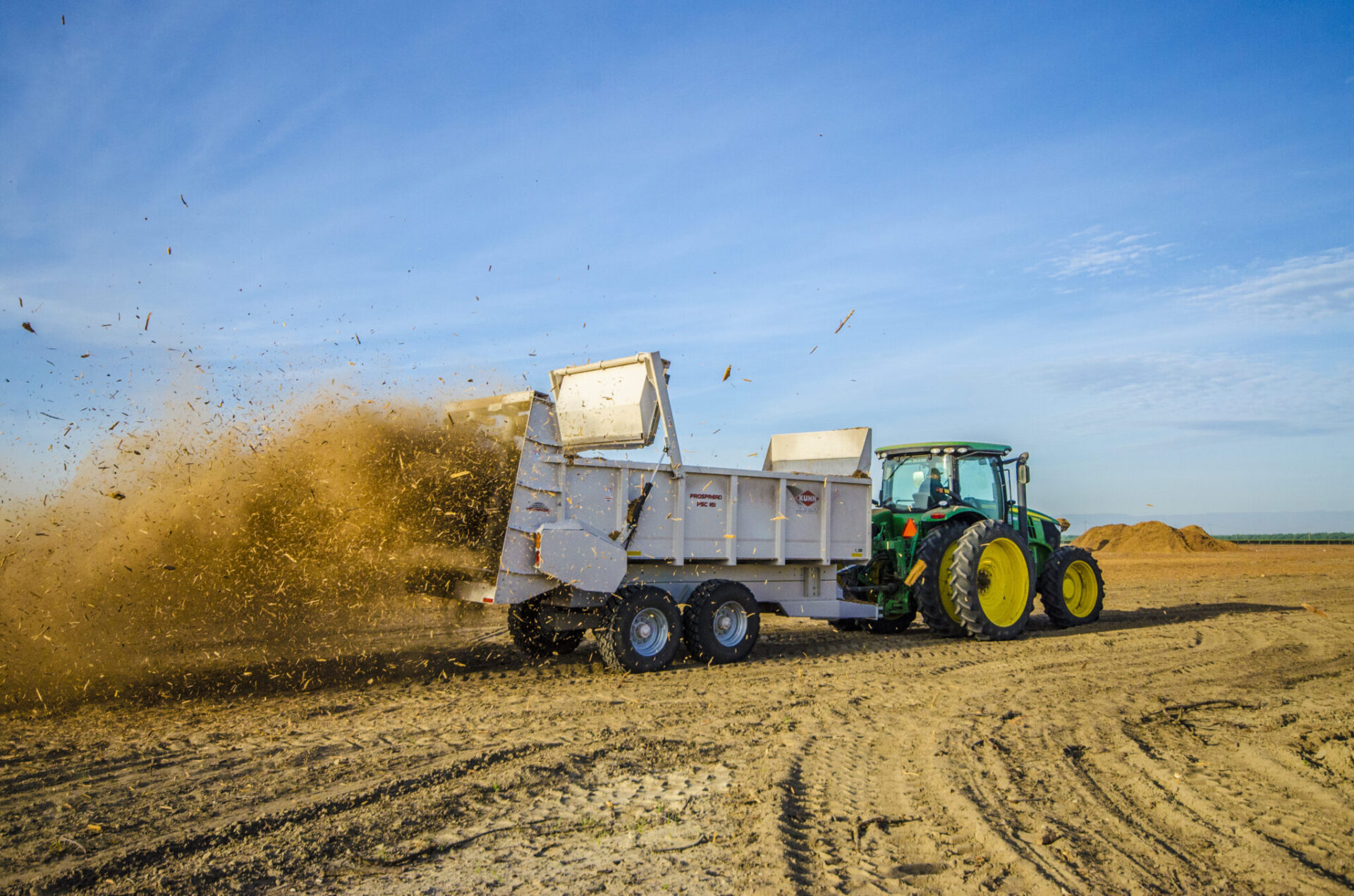
Increased Soil Permeability
She added that researchers are seeing increased permeability in WOR plots, which allows water to penetrate deeper into soil, allowing it to reach more of an almond root system. And researchers have found better moisture retention in WOR plots. “Coming out of dormancy in a year like this year where we didn’t get much rain, that can make a big difference,” Culumber said.
Another question Culumber addressed is whether a grower should precondition chips with a manure fertilizer before incorporating them into soil. The question has merit, she said, given that researchers estimate in a mature recycled orchard that as much as 45,000 tons of carbon can be added per acre, and only a small portion of that is nitrogen. Adding dairy manure can help reduce the imbalance in carbon to nitrogen, she said.
“Even just adding eight tons of dairy manure, you are going to really drastically reduce that C:N ratio, maybe as much as half,” she said. “But as far as adding inorganic fertilizers, that might be a little more complicated calculation. Applying large amounts of inorganic fertilizer is not necessarily going to be beneficial for tree growth.
“Our recommendation is that probably fallowing for one to two years is going to be the best in promoting that turnover prior to planting,” she said, “but for a lot of people, we realize that is not an option.”
The good news here, she said, is researchers are finding a rapid decline in the C:N ratio under normal irrigation and fertigation conditions, so bumping up the nitrogen application rate for the first year should be all that is necessary.
“In some preliminary results from trials, we are finding that you can return to those normal fertilization guidelines as soon as the second leaf,” she said.
Culumber added that it is important for growers to come in early with their first shot of nitrogen. “We recommend doing that first dose of fertilizer several weeks after the tree put out leaves,” she said, adding that no more than one ounce at a time is recommended.
Targeting fertilizer to the root zone of trees through well-placed granular applications can improve performance, Culumber said, given that when applied through irrigation it can be difficult to get nitrogen to the smaller root diameter of young trees.
Wood Decay
Culumber also addressed the potential for wood decay diseases to persist in soil under WOR. In addressing this, she referred to research conducted by UC Davis Plant Pathologist David Rizzo and graduate student Bob Johnson that measured the persistence of Ganoderma inoculum over time in a recycled orchard. At the start, the research showed that 100% of the Ganoderma pathogen was present in the wood chips. Seven weeks later, researchers were still recovering about 50% of the inoculum in the largest of the wood chips, but the inoculum was not recoverable in the smaller sized chips.
“This preliminary evidence suggests that if an orchard has a history of disease, maybe fallowing for a year or two is going to be your best bet to ensure you don’t have problems with it in the future. But to alleviate your concerns about the disease, the size of the wood chips after grinding are generally much smaller than the size of the chips where the disease was still recovered,” Culumber said. “That is just not the size of wood chips that we are seeing with the screens that are used on these manure spreaders now.”
Culumber also addressed questions regarding whether wood chips would interfere with harvest. To address that, Culumber presented sampling she did last year where she analyzed material going into a conveyor belt from an orchard that had undergone WOR. She found that only 2.73% of debris in the conveyor belt was wood chips, while 91% was almond hulls and shells.
“We are finding that where people use some of these compacting tillers, there is good success with prepping that orchard,” she said. “And harvest doesn’t come until three years after you’ve planted, so you’ve got a couple of years of decomposition and settling of some of those wood chips.”







